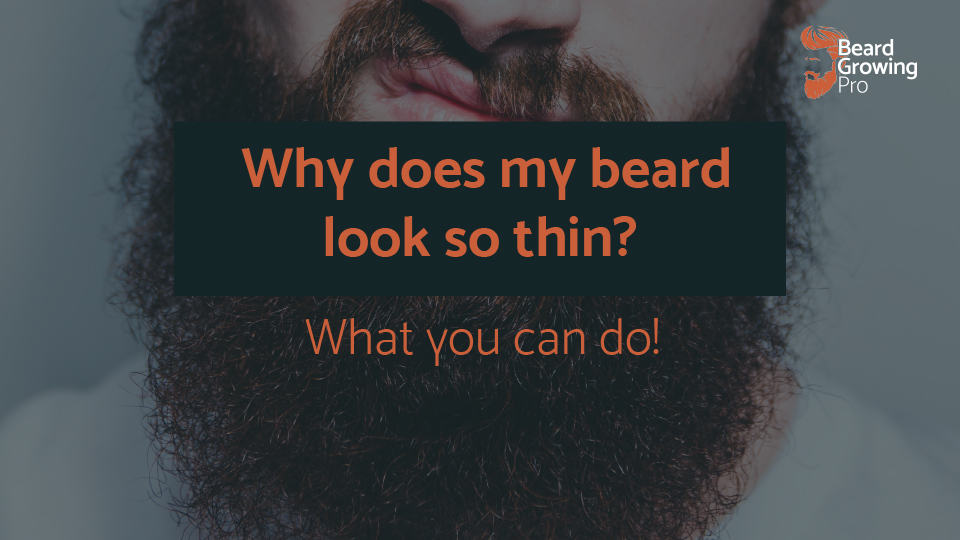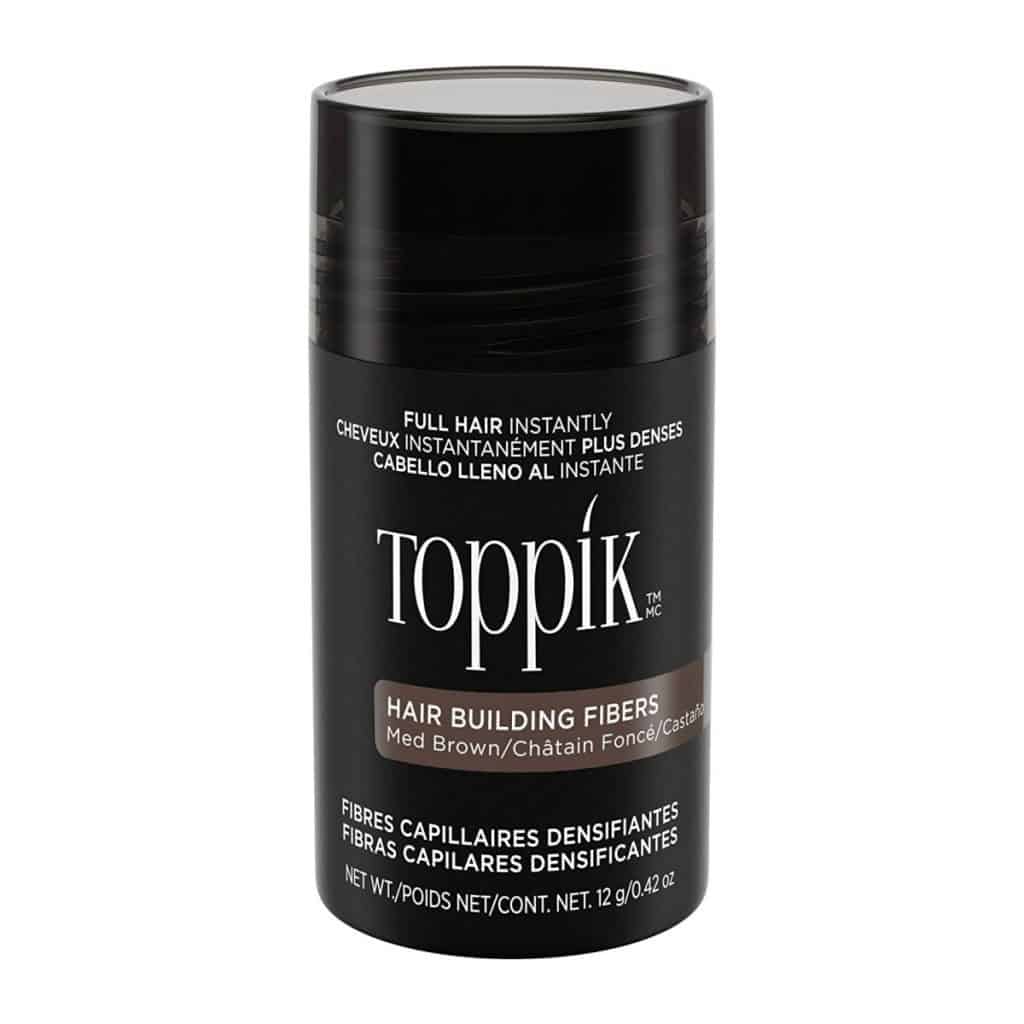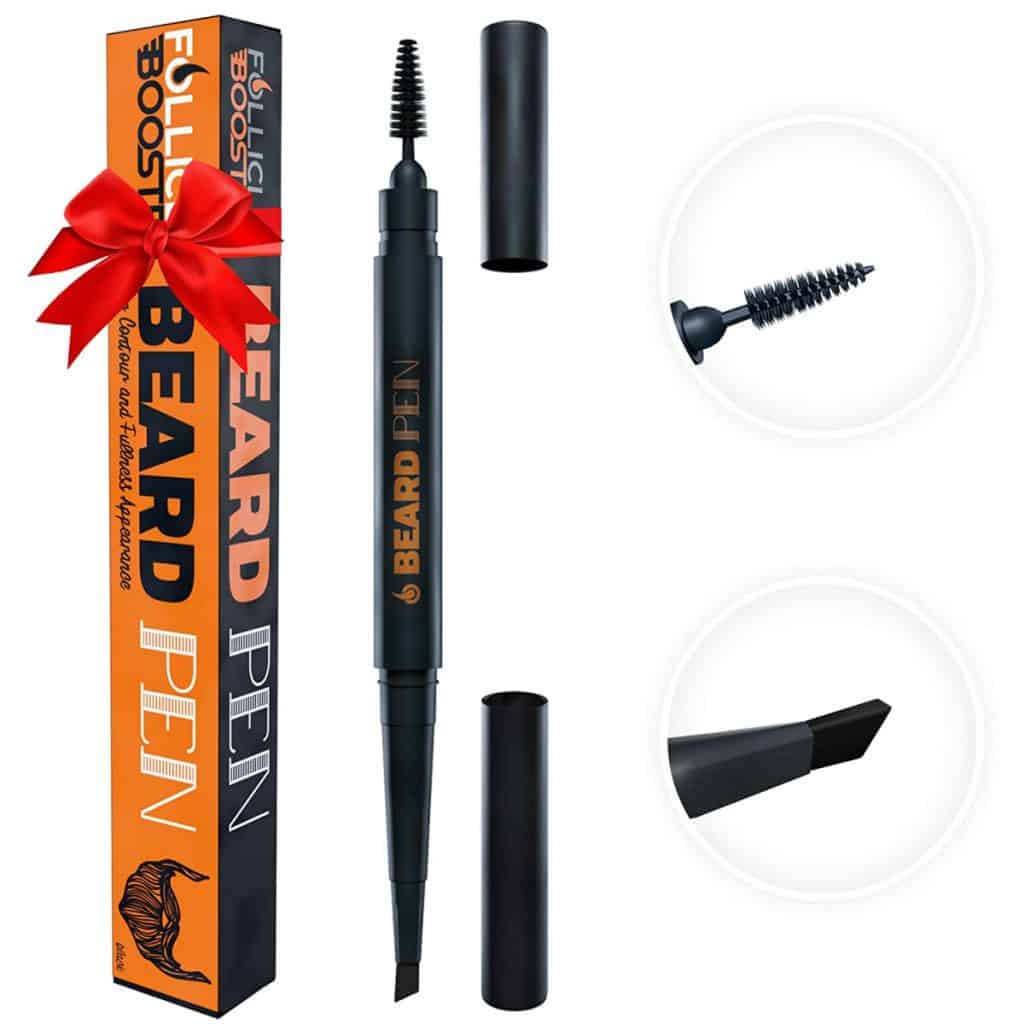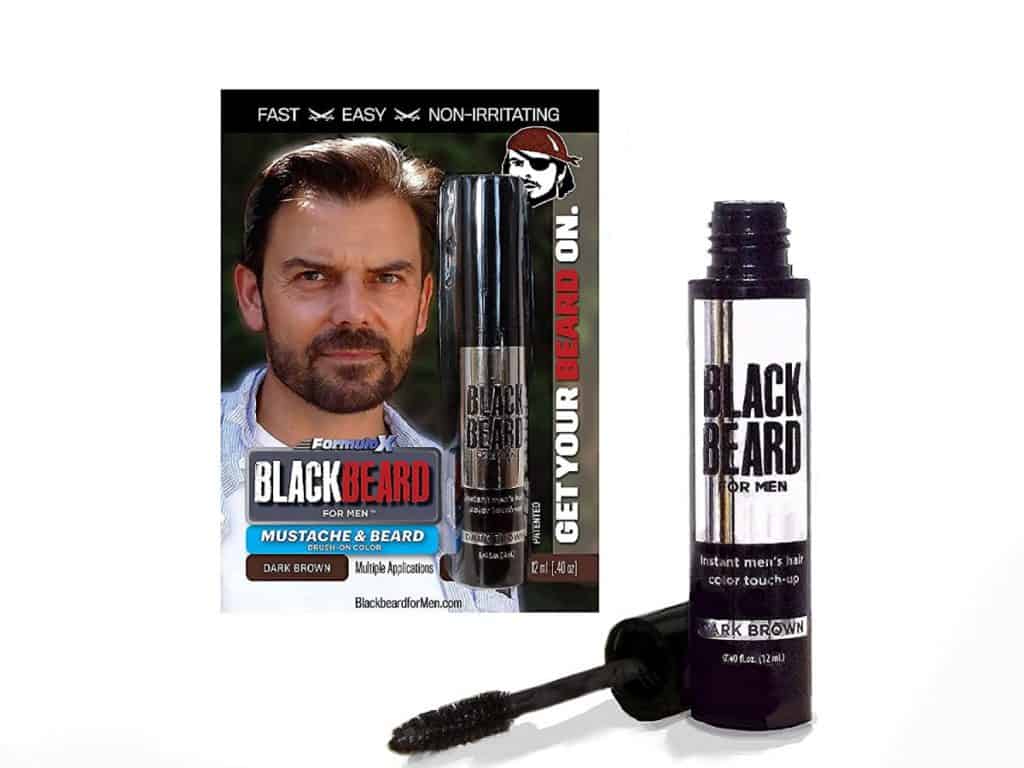Growing a beard can make you sad when you look in the mirror after trying your best not to trim or touch it for a long time, only to find that your beard isn’t as thick as you want it to be!
Beards look thin for one of two reasons – you may not have reached your full beard growing potential yet, or your hair follicle density is low, and it causes your beard to look thin when it is in bright light or against light clothing.
Rather it looks thin and insignificant.
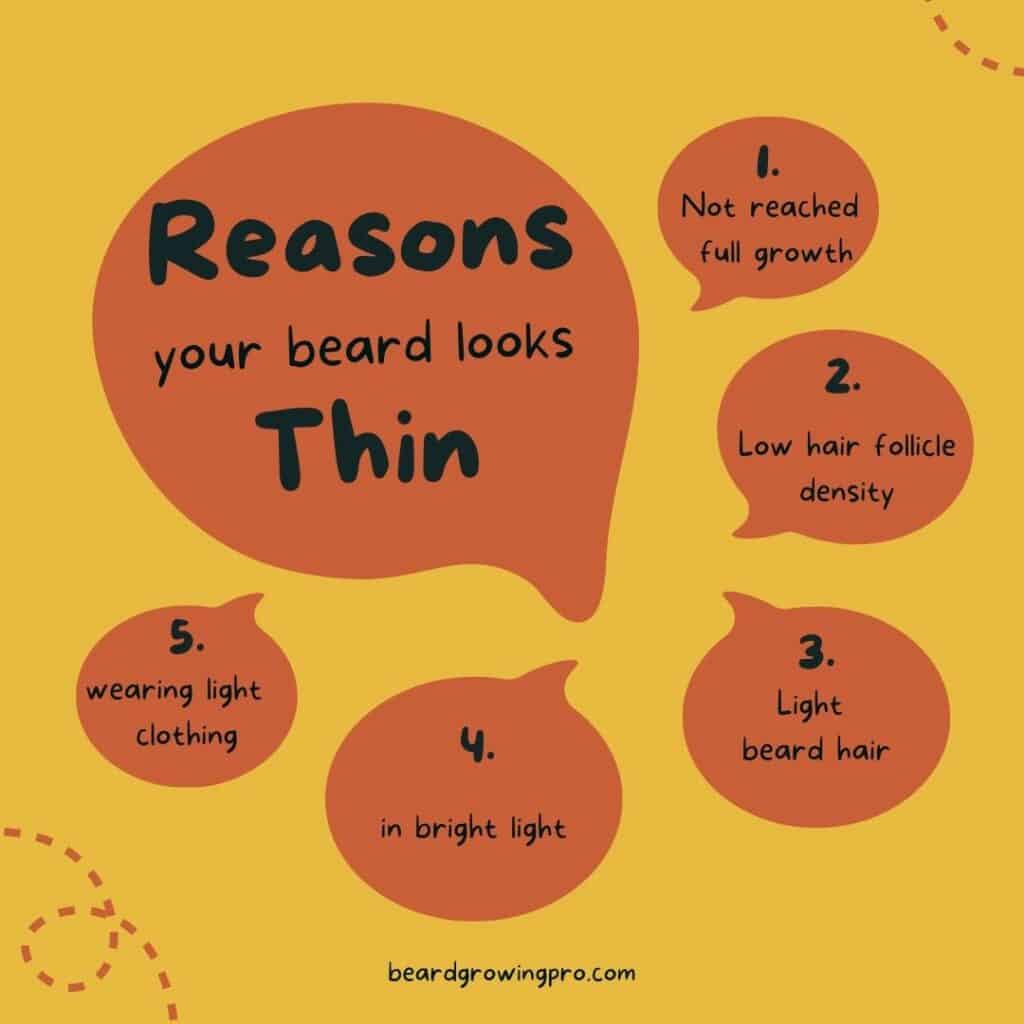
Here we will look at why your beard looks so thin and what you can do about it!
If your hair density is the issue, there are a couple of things you can do about it: change your diet, do more high-intensity exercise or use a topical treatment like Minoxidil on your beard. However, using medication should always be your last resort!
Let’s take a deeper look at the issues surrounding a beard that looks thin and, importantly, what you can do about it! Sometimes it’s the simple things that can make all the difference.
I did a video on this exact subject – you can check it out here:
Article Contents
The simple fix – wear a darker top
I often notice that my beard is looking thin and wispy when I am wearing a light top or T-Shirt.
Check out the difference between my beard in light and dark tops in the photo comparisons below:
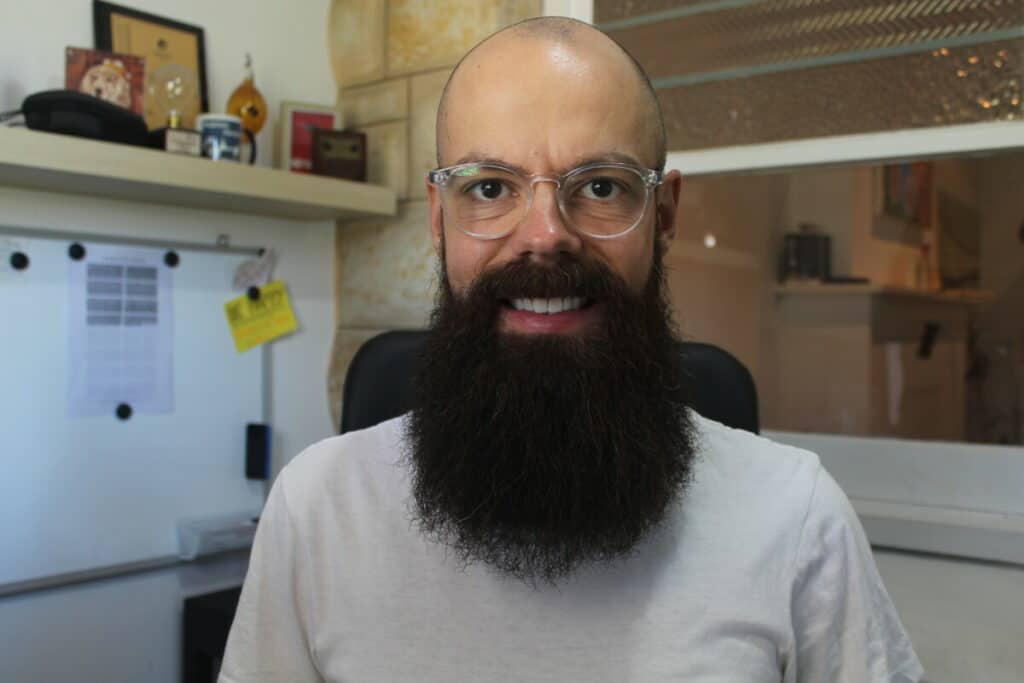
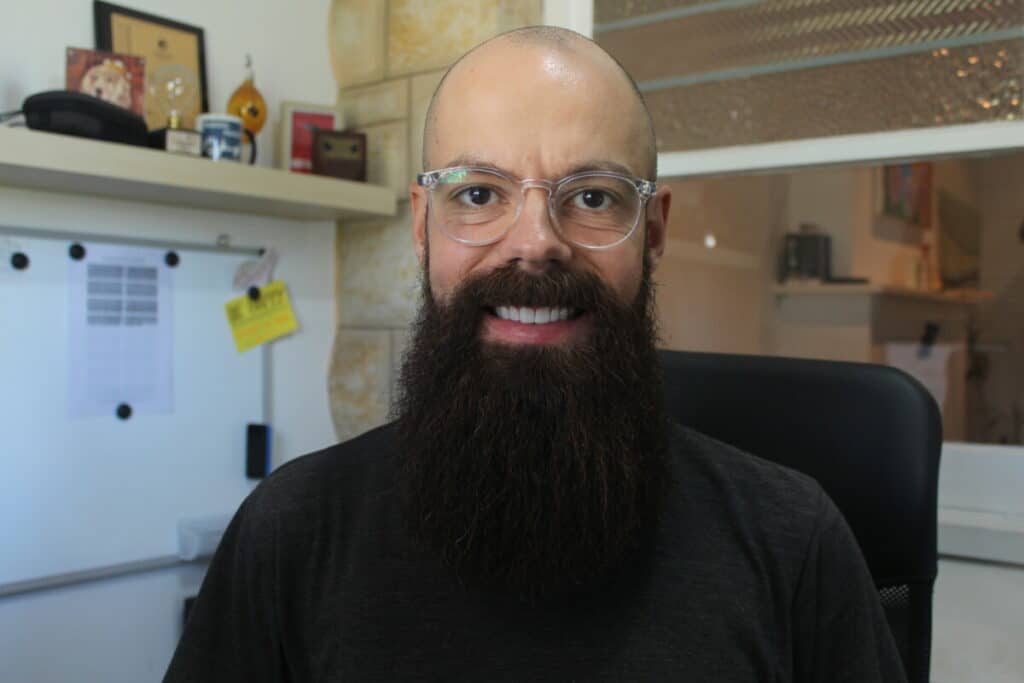
You can see that my beard looks much thinner on the ends when I am wearing a light coloured top!
It may be that you have to stick to darker colour clothing to help stop any contrast affecting the way your beard looks!
How long until your beard fills in
Maybe your beard looks thin because you haven’t reached full beard growing potential yet!
I asked my YouTube audience when they reached their full beard growing potential, and this is what they said:

You may be judging your beard far too early!
Up until a certain point, beard growth will increase with age. It is the early years of life – specifically around the teenage years – where we can expect the hairs on our face to transform into the capability of forming a beard.
Here are the stages that teenage boys can go through – but remember that each step can vary wildly for each individual depending on genetic and environmental factors.
The moustache forms its stage in facial hair development in adolescent males. Facial hair in males does not always appear in a specific order during puberty and varies among some individuals but may follow this process:
- During puberty, the first facial hair to appear tends to grow at the corners of the upper lip (age 11–15).
- It then spreads to form a moustache over the entire upper lip (age 16–17).
- This growth is followed by the appearance of hair on the upper part of the cheeks and the area under the lower lip (age 16–18).
- It eventually spreads to the sides and lower border of the chin and the rest of the lower face to form a full beard (age 17–21).
- Although this order is commonly seen, it can vary widely, with some facial hair starting from the chin and up towards the sideburns.
As with most human biological processes, this specific order will vary from person to person, depending on genetic heritage and environment – like the ability to live a healthy and active life.
Density or length that matters?
Often, it is not that your hair is not long – it’s that your hair is not growing as dense as you’d like it. A dense beard feels and looks substantial.
A dark full beard is achieved with a close collection of hair follicles and dark hair types.
If you have blonde hair and low hair density, you are more than likely to have a beard that appears thinner than you’d want.
Let’s look at hair density and the science of working out if your beard will always be thin!
Hair density
In my experience, the chin and moustache areas are the thickest parts of the beard – the cheeks are the least populated parts of my beard. If you are struggling with those parts of your beard – check out my other post – How to grow a beard on your cheeks.
Determining your hair density on different parts of your face may be the best way to determine if you can grow a decent beard.
A 2011 study found that you can reliably determine the density of a beard by using a simple photographic method. Please take a look at the image from the University of Pennsylvania for examples of the hair density that they found on a wide selection of men.
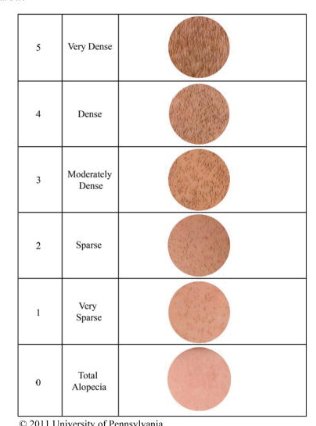
But don’t worry! There are plenty of bead styles that do not require a think density of hair follicles. Work with what you have and be super confident in your choice. That is always the best way to grow your beard! It makes you more attractive too!
Hair length
The hair on your head grows at varying rates. Scalp, eyelash and brow, and beard hair grow at different rates. Your eyelash and eyebrow hair grow the slowest, and beard hair is the hair that grows the fastest, but not by much.
According to science, beard hair grows fast. The average daily growth rate of beard hair ranges between 0.3 and 0.5 mm, similar to the growth rate of scalp hairs and is about twice as fast as that of eyebrow hairs.
Here are the rates that which the hair grows. It’ll probably surprise you just how slow it is:
| Hair type | Growth rate |
|---|---|
| Scalp hair | 0.014 inches/day (0.36 mm/day) |
| Eyelash/brow growth | 0.006 inches/day (0.16 mm/day) |
| Beard hair | 0.015 inches/day (0.38 mm/day) |
If you feel like your beard length is the issue with growing a thick beard this is what I tell people:
TOP TIP: A tip I often tell new beard growers is to take a picture of your beard in the early stages and every month to track progress; only then can you truly say if it has slowed down or not.
If you are reading this blog post, it is almost certainly because you have thin hair on your cheeks. Here are all the things you can do about it:
Thin beard on cheeks – the worst offender
Cheeks are the worst offender for many people when it comes to a thin patch of their beard. Cheeks naturally have a thinner hair density than that found on other parts of the face – but there are a couple of things you need to take into account if you think that your beard is thin on the cheek area:

Wait for 12 weeks before deciding that you need an intervention
Many people don’t understand that you inherit a huge portion of your beard growing potential from your parents. Genetics plays a huge role in determining if you can grow a beard on your cheeks.
You may have inherited sparse or fine beard hair from your ancestors. That makes you unlucky, but there’s no reason that you can’t make the most of your situation!
Every person’s hair growth rate is different, with some growing hair slower than others. Before you decide that you need an intervention for your cheek hair, you must wait at least 12 weeks.
It took my beard about six weeks to feel full on the cheeks, and I consider myself a good beard grower. My beard is thinner on the cheeks than on my moustache and chin. I’ve come to accept that this is how my beard grows and what makes my beard unique.

If, after 12 weeks, you are still not happy with how your beard hairs are growing on your cheeks, you have a few options.
The first is to choose a beard style where you don’t have to worry about thin patches. Like every good bit of fashion advice, you should work with your strengths and minimize the attention on the weak parts of your beard.
Thin beard styles
A few beard options have thin hair on any part of your beard.
It will help if you choose a beard style that emphasizes the beard you HAVE and not the beard that does NOT HAVE.
There are so many styles of facial hair to choose from that a full beard is not the right choice for many people!
Here are a few options for you to look at if you have thin parts of your beard:
Balbo Beard Style

This style is characterized by the absence of hair on the cheeks but gives the effect of a full beard by having long hair along the jawline.
The jawline is something that most men can grow strongly so it is a great option for many! Having a strong moustache also really helps with pulling off this style!
Detached Goatee

You can see in this image that the cheeks are very short in length and do not contribute much to the beard. This style is perfect for people with thin hair density on their cheeks and other parts. To pull this one off you need to grow out the soul patch and mustache while keeping the length on the sides low. Buy a good trimmer to maintain the professional look of this one!
Patchy beard

Patchy is normally something that we want to avoid. It’s seen as bad. But this is not always the case. Check out the beard on the man above. Clearly, the cheek area is the weakest part of his growth and he has some connection issues with his mustache.
To pull off this type of beard it’s all about the symmetry that makes this look trendy. Maybe your weak cheek line can become an asset for you!
If changing your style is not right for you and you’d rather focus on boosting the hair density that you have then these are the options open to you:
Boosting testosterone levels
Testosterone is the primary male sex hormone you learn about in high school. During puberty, testosterone is responsible for a load of bodily changes, and the one we are interested in is the development of facial hair.
Most males have a very similar level of testosterone in their bodies.
But the men with thick body hair and beards are more sensitive to the testosterone produced in their bodies.
These men are also more likely to go bald because of the increased sensitivity that their body has to the male hormone testosterone.
Testosterone receptors can be found in hair follicles and cause hair to grow or not grow. For example, beard hairs are stimulated by testosterone, while head hairs can stop growing due to testosterone. It just depends on the sort of hair follicle.
Regarding beard hairs, testosterone can cause it to grow faster and fuller and cause hair to grow where it didn’t work in the past. It takes a long time for testosterone to affect the face fully. So if you are only young, remember that beards look best when people are in their 30s.
Next, before going for anything extreme like medication or surgery, you can try to boost the testosterone level in your body by natural and not so natural means.
Exercise
There’s a heap of research that shows that exercise is one way to get your testosterone levels up! Not all exercise is created equally, however. Make sure your exercise contains these activities:
- Sprinting – Studies showed that testosterone levels increased significantly for people who performed a series of very short (but intense) 6-second sprints. The testosterone levels remained high even after the participants recovered from the sprint workout.
- Lift Heavy Stuff – Studies have shown that it takes heavy weights to boost testosterone levels. Focus on full-body exercises like squats, deadlifts, benchpresses and free weights at 85 – 95 % of your one-rep max!
- Use Long Rest Periods – Longer rest periods (more than 120 seconds) between reps are better than shorter rest periods.
- Remember to use your legs – Nothing feels more ‘manly’ than doing upper body exercises, like bicep curls or bench press, but studies have shown that there are significant increases in testosterone when leg and lower body exercises are included in the routine.
Diet
Combining your exercise with a diet that will promote testosterone production in your body can help grow your beard.
- Ginger – A 2012 study showed that taking a daily ginger supplement for three months increased testosterone levels by 17.7 percent.
- Pomegranates – Another study showed that drinking pomegranate juice for 14 days increased the testosterone found in their saliva by 24 percent.
- Fortified plant milk – Vitamin D found in plant milk such as almonds, soy, hemp, and flax can increase testosterone levels. You can also get a great boost of vitamin D from the sun too! So remember to get out and about!
- Leafy green vegetables – Leafy greens are full of magnesium – which is an element that has been shown to increase the levels of testosterone in the human body. Eat lots of spinach, kale and swiss chard!
- Tuna – An animal-based study showed that fish oil can increase testosterone levels. Because this has not been done in humans you need to take this with a grain of salt!
Maybe the above options have not worked for you or you are not willing to give it a go! These last two options should be used as a last resort:
Medication
Medication is an option that you should leave as a last resort. There can be a significant expense for the stuff that works, and there are plenty of other options that will not work and still costs a load of money!

- Boron – There are a couple of studies that show that boron increases the testosterone and DHT levels found in the body. In one study people were asked to take 10 mg of boron every day and after 7 days the results were very encouraging.
- Mucuna Pruriens – There have been two studies that show the testosterone boosting power of this supplement. It has been shown that it increases testosterone levels by about 38 percent.
- Creatine – There are plenty of scientific reports that show how well creatine boosts the levels of testosterone in the human body.
- Ashwagandha aka Ayurveda – There are two studies (here and here) that used human participants with both using 5g per day of ashwagandha root powder for 90 days. Both of the studies found significant increases in testosterone – about 40% and 16% on infertile subjects and about 15% in people with no fertility issues.
Minoxidil
The most well-known hair growth treatment is Minoxidil – you can find out more about it in this wiki – click here. It’s found in hair regrowth products such as Rogaine.
The FDA has NOT approved Minoxidil for use on the face and so all of the instructions are for the scalp.
Men who used topical Minoxidil grew beards faster than those who used a placebo. The findings were published in the Journal of the Japanese Dermatological Association in 2016. Patients were instructed to dab a 0.5 mL of 3% minoxidil ointment on their chin twice a day.
The patients’ beards were photographed every four weeks. Three doctors used a seven-point scale to score the images, quantifying each person’s different amounts of beard development. Patients self-assessed the growth of their beards on the 16th week using the same scale as a comparison.
The photographic score of the minoxidil group was considerably higher than that of the placebo group at week 16.
Here is the data:
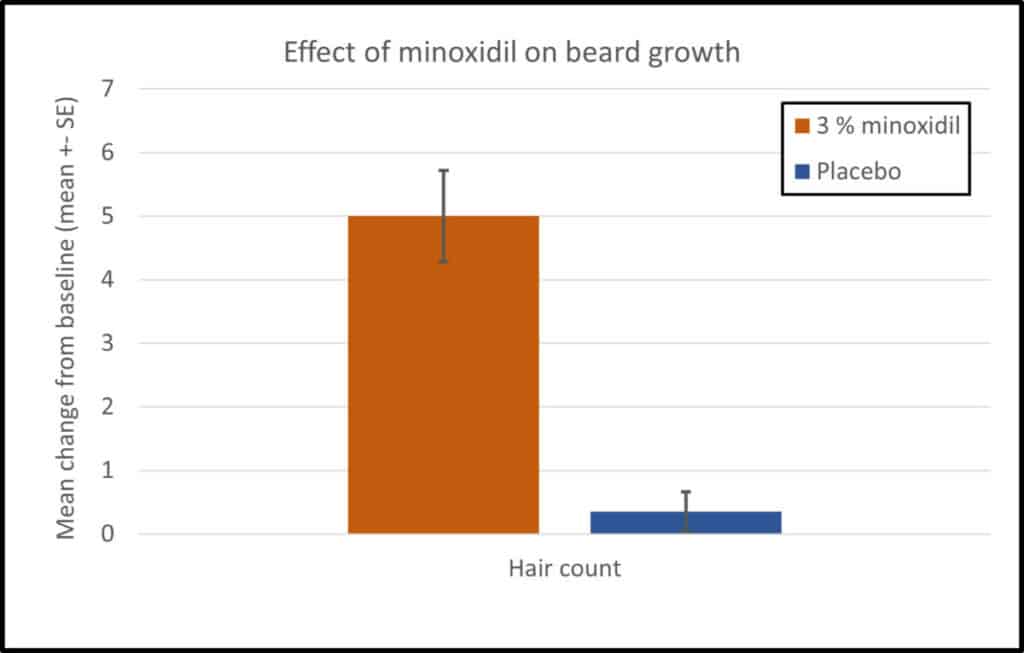
One of my favorite places on the internet, Reddit, has a subreddit where people show their progress pics. check out this from user u/ImBadAtHalo.
You can see that the cheek hairs of his beard are much hairier and denser than when he started. One of the issues is that the hairs will stop growing once you stop using a Minoxidil containing product. So you need to be aware of the potential expense and commitment required before embarking on this usage. Besides the fact that you need to do this treatment for a long time – up to a year and a half, you may experience some side effects.
Check out my other blog for a full rundown on the side-effects of Minoxidil.
Conclusion
Your beard looks thin for one of two reasons – you may not have reached your full beard growing potential yet OR your hair follicle density is low and it causes your beard to look thin! If you are under the age of 30 you may still have a bit of growth yet to complete in your beard growing journey.
If your hair density is the issue there are a couple of things you can do about it: change your diet, do more high-intensity exercise or use a topical treatment like minoxidil on your beard. However, using medication should always be your last resort!

